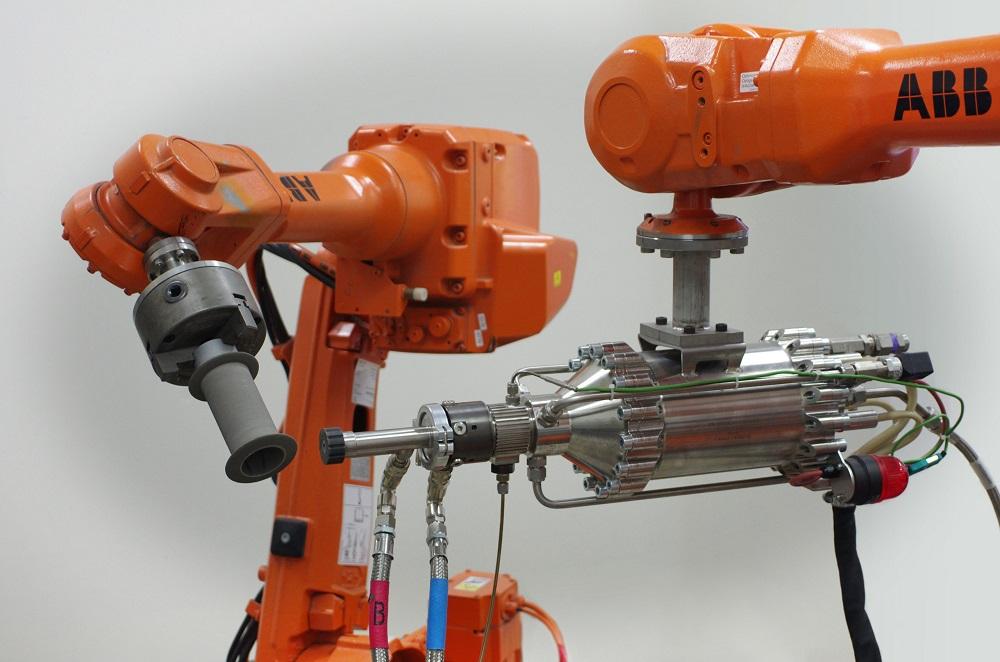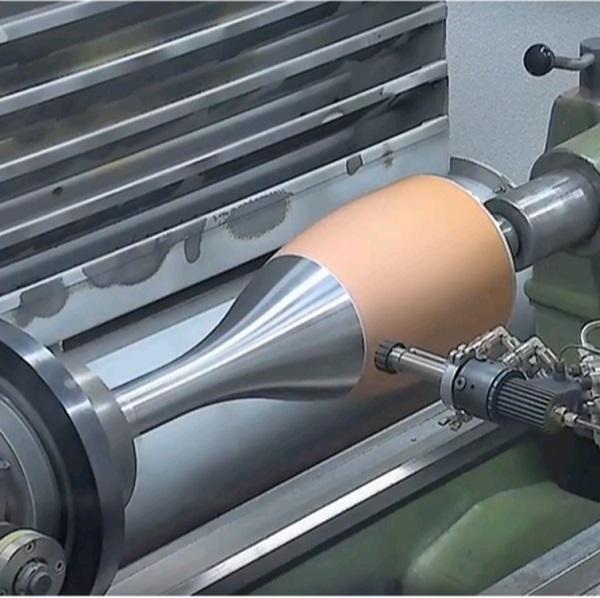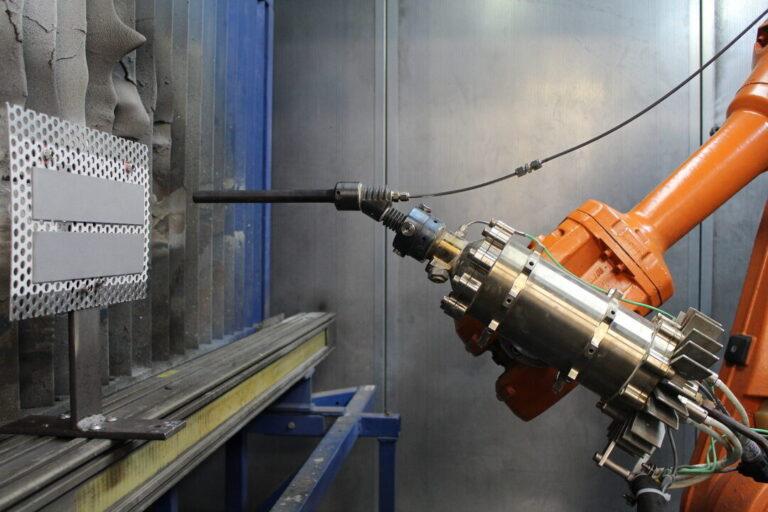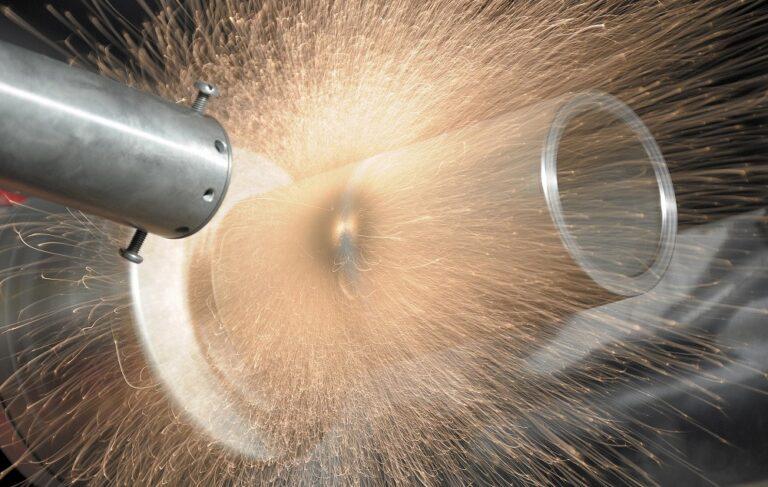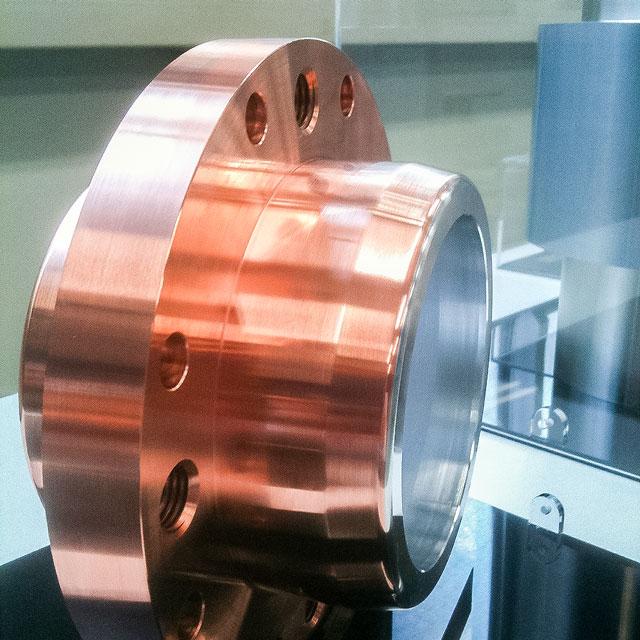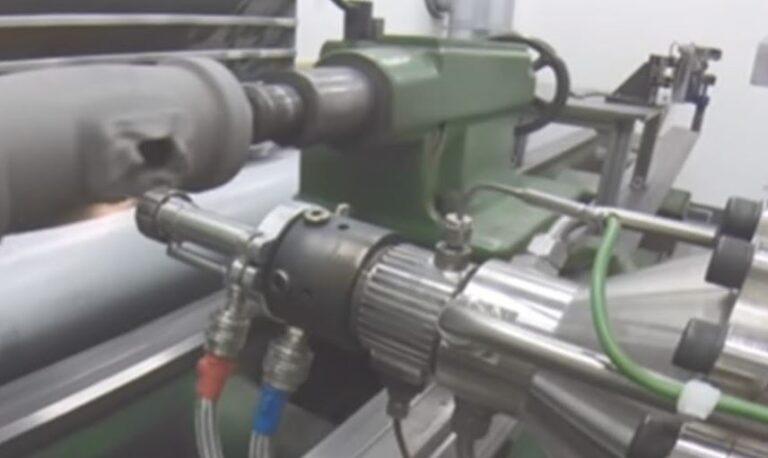Introduction
The world of 3D printing is vast and varied. Among its many facets, the ‘cold spray’ technique stands out. This method has revolutionized the manufacturing industry, thanks to the unique properties of cold spray materials.
In the cold spray process, metallic powders are accelerated through a high-speed gas jet. They then impact a substrate without melting, creating a robust bond. This is a departure from traditional 3D printing methods, where materials must be heated to high temperatures.
The choice of materials, both gases and powders, plays a pivotal role in the cold spray process. They determine the final product’s properties, such as strength, durability, and resistance to wear and tear. Therefore, understanding these materials is essential for mastering cold spray 3D printing.
This blog post will delve into the science behind cold spray materials. We’ll explore how these materials contribute to the process and the final product’s properties. We’ll also look at why certain gases and powders are chosen over others, shedding light on their unique characteristics.
Ultimately, we hope this deep dive will enhance your knowledge of cold spray materials. Whether you’re a 3D printing enthusiast, a professional in the field, or simply curious about the subject, this post will provide valuable insights. So, let’s embark on this exciting journey into the world of cold spray 3D printing.
A brief overview of 3D printing
A Brief Overview of 3D Printing
3D printing, also known as additive manufacturing, has been a game-changer in the production world. It involves creating three-dimensional objects from a digital file. This technology has opened new frontiers in manufacturing, design, and even in fields like medicine and architecture.
The 3D printing process usually starts with a digital design. This design can be created using computer-aided design (CAD) software or obtained from a 3D scanner. The digital model is then sliced into thin layers by the software. These slices guide the 3D printer in laying down the material layer by layer, eventually building the final product.
Traditionally, 3D printers have used materials like plastic or resin. They work by heating these materials until they reach a semi-liquid state. The printer then extrudes the material, following the pattern set by the digital model. As each layer solidifies, the next one is added on top, gradually creating the desired object.
Introduction to cold spray technique
The cold spray technique is a novel method in the 3D printing landscape. It’s an additive manufacturing process that uses high-speed gas jets and powdered material. Let’s delve into the workings of this technique.
In the cold spray process, a high-speed gas jet accelerates the powdered material. The material, often metallic, shoots toward a substrate at great speed. The particles don’t melt, but bond to the surface upon impact. This results in a dense, solid structure forming layer by layer.
What sets the cold spray technique apart is its temperature management. Unlike traditional 3D printing, it doesn’t require high heat. This mitigates the heat-induced problems that can arise in other methods. It also allows for a broader range of materials, including those sensitive to high temperatures.
The choice of cold spray materials is crucial. It can influence the quality, strength, and other properties of the final product. Metallic powders are often used due to their robustness and durability. However, the choice of gas is also essential. Commonly used gases include nitrogen and air, each bringing its unique characteristics to the process.
In conclusion, the cold spray technique presents an innovative approach to 3D printing. It overcomes the limitations of traditional methods, offering more versatility in terms of materials. It’s a fascinating realm of additive manufacturing, opening up new possibilities in various industries.
Importance of materials in cold spray 3D printing
In the realm of cold spray 3D printing, the choice of materials is pivotal. It can make the difference between success and failure. Let’s explore why.
The cold spray process relies on powdered materials and carrier gas. The type of materials used can greatly impact the final product. They determine key properties, like strength, durability, and resistance to wear and tear.
Metallic powders are often chosen for their robust properties. They’re capable of forming solid, reliable structures when sprayed onto a substrate. The type of metal selected can influence the final product’s characteristics. For instance, aluminum is prized for its lightness and corrosion resistance, while steel offers superior strength.
The gas used also plays a vital role. It’s responsible for accelerating the powder particles toward the substrate. The choice of gas can affect the velocity of these particles and, consequently, the bonding strength. Nitrogen and air are popular choices, each with its unique benefits.
To sum up, the selection of cold spray materials is crucial. It can significantly influence the overall quality and properties of the final product. Therefore, understanding these materials and making informed choices can lead to more successful outcomes in cold spray 3D printing. This is a key aspect we’ll delve deeper into in the following sections.
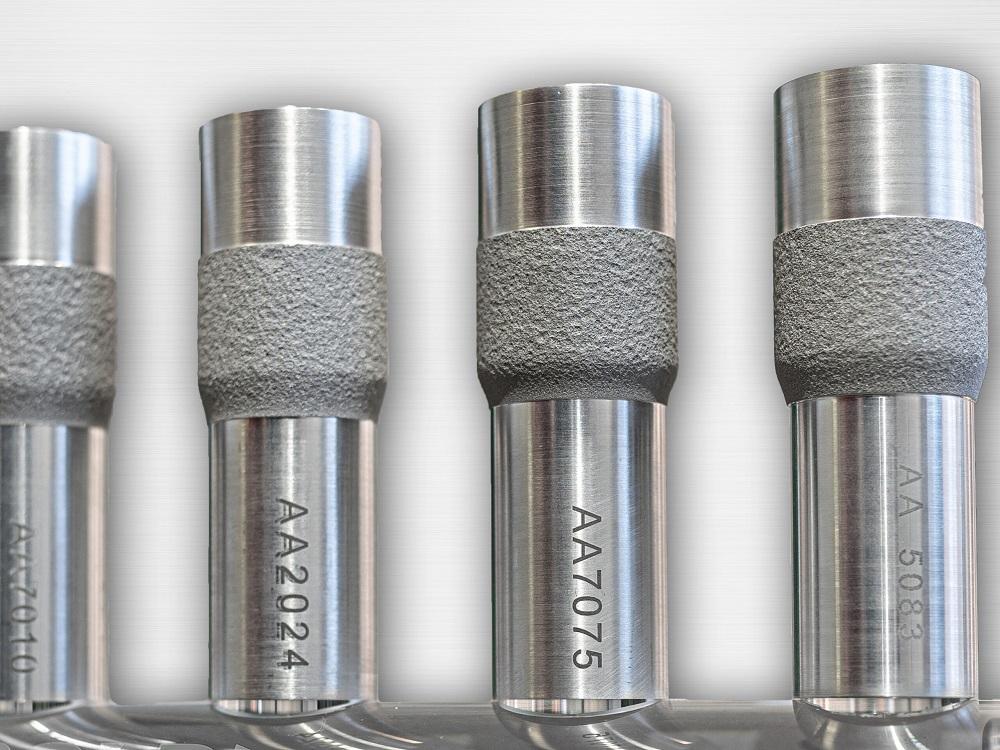
Understanding Cold Spray Process
The cold spray process is a cornerstone of the additive manufacturing industry. It involves the use of cold spray materials, including powdered metals and carrier gases, to build three-dimensional objects. By shooting these particles at high speeds onto a substrate, it creates solid layers without the need for excessive heat. This innovative technique is transforming the 3D printing landscape, offering a unique approach to material deposition and heat management. In the following sections, we will delve deeper into the intricacies of the cold spray process, providing a comprehensive understanding of its mechanics and applications.
Explanation of the cold spray process
The cold spray process is an intricate one that combines specialized equipment with unique materials. Let’s break it down.
Firstly, we have the cold spray system itself. This typically consists of a powder feeder, a high-pressure gas system, and a spray gun. The powder feeder transports the powdered material to the spray gun, where it combines with the carrier gas.
Now, let’s talk about the mechanics of the process. When the gas is pressurized, it accelerates the cold spray materials, often metallic powders, to high speeds. These particles then shoot out of the spray gun, targeting the substrate.
Importantly, the particles don’t melt in this process. Instead, they deform upon impact, bonding to the substrate and to each other. This results in a layer-by-layer construction of the final product.
The type of carrier gas and its pressure can significantly affect the process. Nitrogen and air are common choices, but the selection can depend on factors like the type of powder and the desired end-product properties.
Overall, the cold spray process provides a unique approach to additive manufacturing. By understanding the mechanics and the role of cold spray materials, we can tap into their full potential, opening up a world of possibilities in 3D printing.
Comparison with other 3D printing techniques
When comparing cold spray with other major 3D printing techniques, its unique qualities become even more apparent. Let’s take Fused Deposition Modeling (FDM), Selective Laser Melting (SLM), and Stereolithography (SLA) as examples.
Starting with FDM, it uses thermoplastic filament which is heated and extruded through a nozzle. In contrast, cold spray uses powdered metals and gases, building the product without the need for high temperatures. This makes cold spray more suitable for temperature-sensitive materials.
SLM, on the other hand, uses a high-power laser to fuse small particles of metal into a mass that has the desired 3D shape. However, cold spray operates at a lower temperature, avoiding the issues of thermal stress and distortion that can occur in SLM.
Lastly, SLA uses a light source to cure liquid resin layer by layer. While this technique allows for high resolution and fine features, it’s limited to materials that can be formulated into resins. Cold spray, with its use of metallic powders, expands the range of possible materials.
To summarize, here is a table comparing these techniques:
| Technique | Material Type | Temperature | Best For |
|---|---|---|---|
| Cold Spray | Metal powders, gases | Low | Temperature-sensitive materials, metal objects |
| FDM | Thermoplastic filaments | High | Plastic parts, prototypes |
| SLM | Metal powders | Very high | Complex metal parts, high-strength applications |
| SLA | Photopolymer resins | Low (UV light) | Detailed models, prototypes, parts with fine features |
In conclusion, while each technique has its strengths, the use of cold spray materials and the lower operating temperatures set cold spray apart in the world of 3D printing.
Key advantages and challenges of cold spray
Cold spray, with its unique features, offers several key advantages. Firstly, this technique allows for the use of a wider range of materials, including those sensitive to high temperatures. Cold Spray Materials such as metal powders can be used, expanding the possibilities for 3D printing.
Another advantage lies in its low operating temperatures. This avoids thermal stress and distortion, which are common in high-temperature 3D printing techniques. Moreover, cold spray can achieve high deposition rates, making it faster in some cases.
Yet, it’s not without its challenges. One of the main obstacles is the cost. The price of high-quality metal powders and gases can be significant. This limits its usage to specific applications where these costs can be justified.
Secondly, controlling the parameters of the process can be complex. This is due to the high-speed particles and the need to balance several factors like gas pressure, temperature, and powder size.
Finally, surface finish and porosity can be issues. Cold spray often results in rougher surfaces and higher porosity compared to other techniques.
So, while cold spray offers exciting prospects in the field of 3D printing, overcoming these challenges is crucial for its wider adoption.
Gases in Cold Spray 3D Printing
In the cold spray process, gases play a vital role. They propel the Cold Spray Materials, such as metal powders, onto the surface. The choice of gas affects the speed of the particles, the deposition efficiency, and the final properties of the printed object.
Typically, high-pressure inert gases like nitrogen or helium are used. Nitrogen is cheaper and safer, but helium can achieve higher particle velocities due to its lower density. This can improve the bonding between the particles and the substrate.
However, the choice of gas isn’t the only consideration. The temperature and pressure of the gas also significantly affect the process. High gas temperatures and pressures can increase particle velocities, improving the coating’s quality.
Despite the complexity, getting the gas choice and parameters right is crucial for achieving the desired results with cold spray 3D printing.
Role of gases in the cold spray process
Role of Gases in the Cold Spray Process
In cold spray, gases serve multiple critical functions. Firstly, the gas propels Cold Spray Materials from the nozzle to the substrate. The type of gas chosen affects the speed and trajectory of these particles. This impact is vital as it influences the bonding strength and overall quality of the 3D-printed object.
Secondly, gas has a role in heat management. It cools the particles and the substrate, preventing excessive heat build-up. This cooling effect is essential because it helps maintain the ‘cold’ in cold spray, keeping the material below its melting point.
Thirdly, the gas also acts as a carrier for Cold Spray Materials. It suspends the particles and guides them toward the substrate. This process ensures an even distribution of materials, which contributes to a more uniform deposition.
Lastly, the gas contributes to the safety of the process. By using inert gases like nitrogen or helium, we can reduce the risk of combustion or oxidation during the spraying process.
Clearly, gases have a pivotal role in the cold spray process, affecting not only the quality of the output but also the safety and efficiency of the procedure.
Types of gases used and why
Nitrogen and helium are the two primary gases used in cold spray. Nitrogen is often the first choice due to its abundance and lower cost. It offers satisfactory results for most Cold Spray Materials, making it a practical choice for numerous applications.
However, helium offers unique benefits despite being more expensive. Helium has a lower density and higher speed of sound compared to nitrogen. These properties allow particles to reach higher velocities, which can improve bonding and the overall quality of the deposition.
Additionally, helium’s low reactivity reduces the risk of undesirable chemical reactions during the process. This characteristic makes it a preferred choice when working with more reactive Cold Spray Materials.
In summary, the choice of gas in cold spray depends on multiple factors. These include cost, material characteristics, and the specific requirements of the application.
Impact of gas selection on the end product
The choice of gas in cold spray significantly impacts the end product. Nitrogen, while cost-effective, may not achieve the high velocities required for optimal bonding with some Cold Spray Materials. This can result in a lower-quality deposition, with decreased density and mechanical strength.
On the other hand, using helium can enhance the deposition quality due to its ability to accelerate particles to higher speeds. The end product will generally have higher density and better mechanical properties. However, the increased cost of helium must be taken into account.
Additionally, the selection of gas can influence the thermal properties of the end product. For instance, helium’s lower thermal conductivity can help to minimize heating of the substrate during deposition, which can be crucial for temperature-sensitive materials.
Therefore, understanding the role of gases is crucial to optimize the cold spray process and achieve the desired properties in the final product. The best choice of gas will depend on the specific requirements of each application and the characteristics of the Cold Spray Materials used.
Powders in Cold Spray 3D Printing
In cold spray 3D printing, particles, often in the form of powder, are the building blocks. These powders, known as Cold Spray Materials, are critically important. They are accelerated through a high-speed gas flow to create a solid deposition. The powder can be composed of various materials, including metals, ceramics, or polymers. Each material offers unique properties to the end product. Thus, the selection of powder directly influences the quality, strength, and characteristics of the final output. Therefore, understanding powders and their properties is key to optimizing the cold spray process.
Importance of powder selection in cold spray
Powder selection is crucial in cold spray 3D printing. It directly impacts the end product’s features. Depending on the desired properties, different Cold Spray Materials can be chosen. For instance, metallic powders are ideal for creating parts with high mechanical strength.
Moreover, powder particle size and distribution affect the deposition efficiency. Consistent particle size enables a uniform deposition layer. The powder’s shape also matters as irregular shapes can impede flow, decreasing deposition efficiency.
Furthermore, the powder’s material compatibility with the substrate must be considered. To ensure a strong bond, both materials should have compatible thermal and mechanical properties. Therefore, powder selection requires a comprehensive understanding of the cold spray process and the product’s desired characteristics.
Common types of powders used and their properties
Several powders are commonly used in a cold spray, each with its unique properties. Aluminum powders, for instance, offer great thermal conductivity and corrosion resistance. They are often used in heat-sensitive applications.
Stainless steel powders, another common choice, provide excellent mechanical strength and resistance to wear. They’re ideal for high-stress components. Copper powders, on the other hand, are chosen for their electrical conductivity and thermal properties. They’re useful in electronic applications.
Finally, titanium powders, known for their high strength-to-weight ratio, are used in aerospace and biomedical applications. Understanding these properties is key to selecting the right Cold Spray Materials for a specific application.
How powder characteristics influence the final product
Powder characteristics critically impact the final product in cold spray printing. For example, particle size directly affects the final product’s density and porosity. Smaller particles often result in denser, less porous structures.
Powder material also plays a significant role. Aluminum, with its high thermal conductivity, is ideal for heat management applications. Stainless steel’s strength makes it perfect for high-stress parts.
Moreover, powder shape can influence the final product. Spherical particles often lead to smoother surfaces, while irregularly shaped ones can provide better mechanical interlocking.
In conclusion, understanding these factors is crucial in selecting Cold Spray Materials. By choosing the right powder characteristics, you can tailor the final product to meet specific application needs.
Other Consumable Materials
Apart from powders and gases, other materials are used in the cold spray process. These include binders and carrier gases.
Binders help improve powder adhesion during the spraying process. They are typically organic compounds that disperse evenly within the powder. Once sprayed, binders help particles stick to the surface before they solidify.
Carrier gases play a dual role. They help deliver the powder into the spray nozzle and cool the system to prevent overheating. Commonly used carrier gases include nitrogen and argon.
Understanding these materials, along with powders and gases, is essential in optimizing the cold spray process. Therefore, a comprehensive understanding of Cold Spray Materials is critical for successful applications.
Innovations and Developments in Cold Spray Materials
The field of Cold Spray Materials has seen numerous advancements. Innovations are continuously shaping this technology, boosting its efficiency and versatility.
One such innovation involves developing new powder materials. Researchers are exploring a wider range of metals and alloys. This expansion broadens the application scope of cold spray technology.
Another significant development is the optimization of gas and powder combinations. Scientists are studying how different pairings can enhance the quality and properties of the end product.
The use of nanostructured powders is another breakthrough. These powders can result in coatings with improved mechanical properties, leading to more durable products.
Finally, machine learning and AI are also making their way into the cold spray process. These technologies can optimize the process, predicting the best parameters and materials for a specific application. As we move forward, these innovations promise to elevate the potential of cold spray technology even further.
Current trends in cold spray materials
Several trends are shaping the use of Cold Spray Materials. These are influencing both the materials used and the applications of this technology.
A key trend is the use of composite powders. These materials blend different elements to achieve unique properties. This method increases the application range of cold spray.
Another trend is using cold spray for additive manufacturing. Here, the technology serves as a 3D printing method. It’s a fast, efficient way to build metal parts layer by layer.
The exploration of eco-friendly materials is also on the rise. This trend aligns with the global push towards sustainability. Researchers are studying biodegradable metals and recyclable materials for use in cold spray.
Lastly, the application of AI and machine learning in process optimization is a growing trend. This approach helps to determine the best parameters and materials for specific projects.
In essence, these trends are leading to an era of greater flexibility and sustainability in cold spray technology.
Recent innovations in materials for cold spray
The world of Cold Spray Materials is not static. Innovative materials are coming to the fore, pushing the boundaries of this technology.
One such innovation is the use of nanostructured powders. These powders offer improved mechanical properties. They also promote better adhesion to the substrate due to their finer structure.
Another innovation is the use of high-entropy alloys (HEAs). HEAs are made of five or more metals in equal proportions. They offer exceptional strength and resistance to wear and corrosion. This makes them ideal for heavy-duty applications.
The third innovation is the development of self-lubricating powders. These powders have a lubricant embedded within them. They reduce friction and wear during the spraying process, improving the lifespan of the end product.
The final innovation is the use of biodegradable metals, such as magnesium alloys. These materials are ideal for temporary medical implants. They dissolve harmlessly in the body once they’ve served their purpose.
These innovations are reshaping the landscape of cold spray technology. They promise a future of improved performance and new applications.
Future possibilities for materials in cold spray 3D printing
The field of Cold Spray Materials is ripe for future developments. There’s a wealth of possibilities on the horizon.
One such possibility is the increased use of composite materials. Composites combine different materials to enhance the properties of the final product. They could enhance the strength, flexibility, or conductivity of the 3D-printed object.
Next, there could be a focus on environmentally-friendly materials. As sustainability becomes a global concern, materials that are recyclable or biodegradable may become the norm.
Thirdly, we might see the development of materials with unique properties. Think of powders that change color with temperature or pressure. These could open up new applications in fields like sensing or healthcare.
Lastly, advances in nano-technology could lead to nanoscale powders. These could provide superior surface finishes and mechanical properties.
In conclusion, the future of Cold Spray Materials is bright. It offers endless opportunities for innovation and improvement.
Conclusion
Materials play a pivotal role in Cold Spray 3D printing. The right choice of powder, carrier gas, and other consumables ensures a successful process. Key properties like size, shape, and purity of the powders can significantly influence the final product’s quality.
Recap of the role of materials in cold spray 3D printing
The field of Cold Spray Materials is evolving rapidly. In recent years, we’ve seen the development of new powder types, improved processing techniques, and the incorporation of innovative materials. These advancements have led to superior product properties, expanded application areas, and more efficient production processes.
Importance of ongoing research and development in this field
Ongoing research and development in Cold Spray Materials are vital. It drives innovation, opens up new possibilities, and helps tackle current challenges. The focus lies on creating materials that deliver optimal product properties, are sustainable, and are cost-effective.
Final Thoughts and future perspectives
Looking forward, Cold Spray Materials hold great promise. With continued research and development, we can expect even more exciting breakthroughs. From composite materials and eco-friendly options to powders with unique properties, the future of Cold Spray Materials is brimming with potential.
How to Choose the Right Powder for Cold Spray 3D Printing?
- Define the Application
Start by identifying the specific application for which the cold spray will be used. This includes understanding the end product’s required mechanical properties, such as hardness, toughness, and resistance to wear heat, or corrosion.
- Research the Material
Research different materials that can be used in cold spraying. This involves looking into their properties, such as melting point, hardness, and heat resistance. Your findings should align with the needs of the application identified in step one.
- Evaluate Particle Size
The size of the powder particles influences the spraying process and the quality of the coating. Smaller particles generally offer better adhesion and a smoother finish, while larger particles can provide higher build rates.
- Consider Cost and Availability
Not all powders are created equal in terms of cost and availability. Ensure the selected powder is within budget and readily available for the volume required.
- Test the Powder
Before full-scale implementation, it’s important to test the selected powder in a small-scale cold spray setup. This allows you to verify its performance and suitability for your specific application.
- Review and Adjust
Based on the test results, review the choice of powder. If it doesn’t meet the requirements, adjust accordingly, which might mean choosing a different powder or altering the process parameters.
FAQs
A variety of materials can be used, including metals such as aluminum, copper, steel, and titanium, as well as some ceramics and polymers. The choice of material depends on the specific application.
The choice of powder influences the product’s mechanical properties, such as hardness and resistance to wear or heat. It can also impact the surface finish and the accuracy of the final product.
Particle size affects how the material behaves during the spraying process. Smaller particles can provide better adhesion and a smoother finish, while larger particles can allow for higher build rates.
Yes, researchers are continually exploring new materials and improving existing ones. For instance, composite powders that combine different materials are gaining attention due to their superior properties.
The future will likely see the development of new materials tailored for specific applications. This includes materials with enhanced properties, such as greater strength, improved heat resistance, or lower cost. Also, advances in nanoparticle technology may open up new possibilities.

